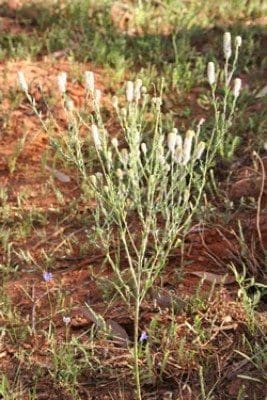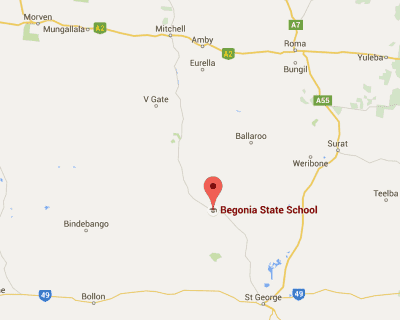An information day to be held at Begonia in south western Queensland on May 26 will provide important updates on the management of the toxic native plant pimelea.
Pimelea poisoning is a potentially fatal disease of cattle, most commonly seen in south-west Queensland, north-west NSW and northern SA.
It is also known as St. George disease (after the region where it was first reported), Marree disease, ‘big head’ (not to be confused with ‘big head’ in the horse, which can be caused by buffel grass) and flaxweed poisoning.
The disease is usually caused by accidental consumption of toxic varieties of the native plant pimelea; inhalation of plant dust can also cause poisoning.
The recent prolonged drought conditions, sparse pastures and the incidence of reasonable cool season rains in some areas seem to be just the right mix to allow a significant population of Pimelea plants to establish.
Many producers have been effected by pimelea poisoning in recent years and are anxious to find a solution.
Pimelea plants can grow on almost any sort of open country and typically start out as small, thin spindly single-stemmed plants with smooth bluish leaves and a maroon stem base. For more details and pictures, visit the Department of Agriculture and Fisheries website.
Typical signs of poisoning in cattle are:
- scouring
- swollen jaw
- prominent pulsing jugular vein in the neck.
Many have fluid accumulation in the brisket and underneath the chest. In sheep, dark scours is the main symptom and is often confused with the signs of intestinal worms. All classes of animals can suffer, and it is more likely to occur in animals that are new to the area, probably because they have no built-up rumen microflora to assist in detoxifying the poison in the plants and are uneducated about its toxicity.
Information day details:
An information day organised by Landmark and the Queensland Department of Agriculture will be held at the Begonia Hall and Sports Club on Thursday, May 26, between 9am and 1pm.
Begonia is on the St George-Mitchell Road, about 70km north west of St George.
Speakers include Dr Richard Silcock, ex Principal Scientist, DAF; Dr Mary Fletcher, Senior Research Scientist, QAAFI; Jenny Milson, Rangelands Scientist, DAF; and Louise Moore, Senior Veterinary Officer, DAF.
Topics include the ins and outs of pimelea poisoning, distinguishing between species, and understanding the toxin.
For more information describing the clinical signs of pimelea poisoning, treatments and management strategies, click here to view a booklet on the FutureBeef website: Understanding pimelea poisoning of cattle (PDF 2.1 MB) or watch the You Tube video below presented by Jenny Milson, DAF Longreach, who will also speak at the Begonia information day.
Sources: Landmark, FutureBeef



There’s a lot of collective expertise delivering this information day. I would highly recommend this day to anyone with pimelea on their property.